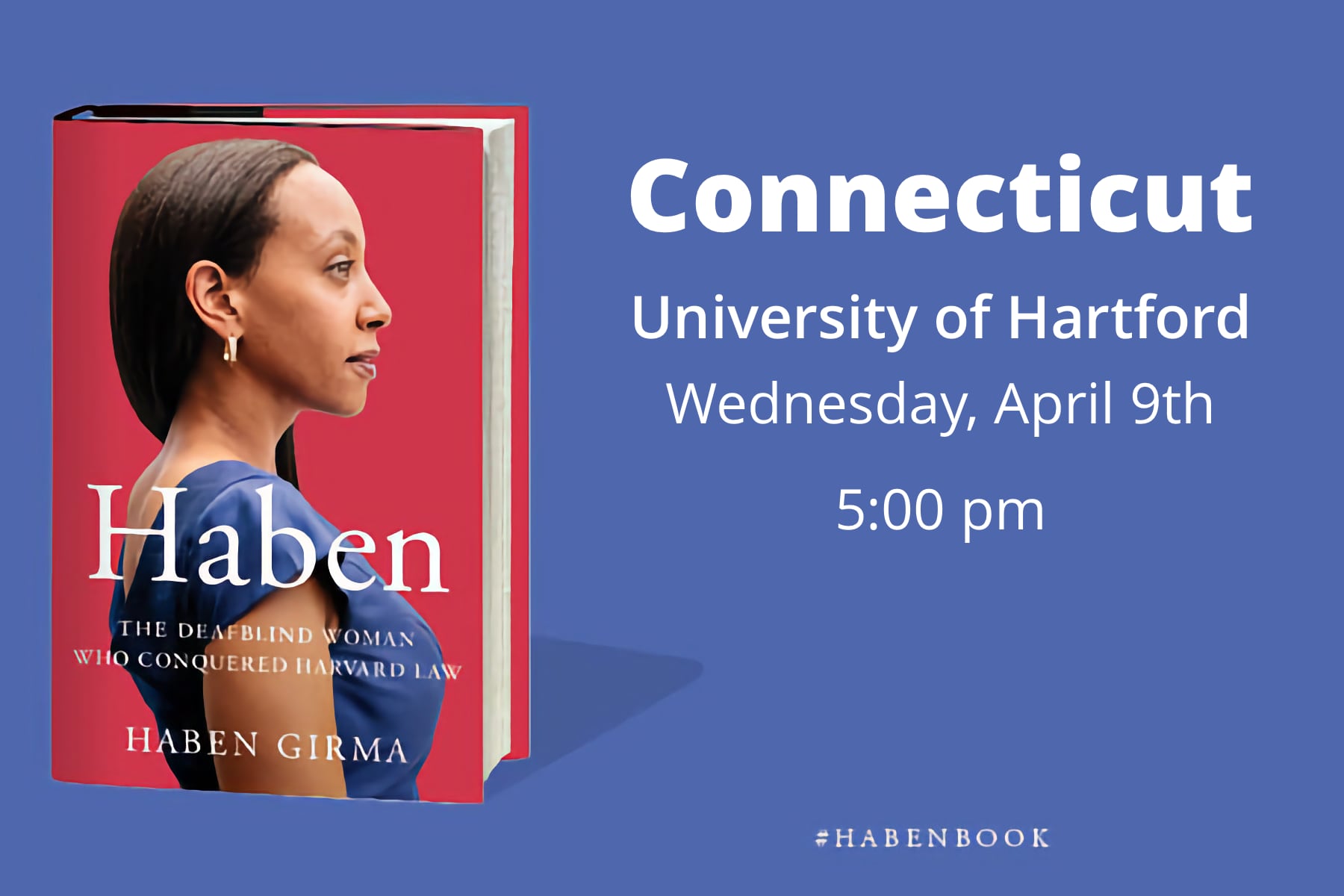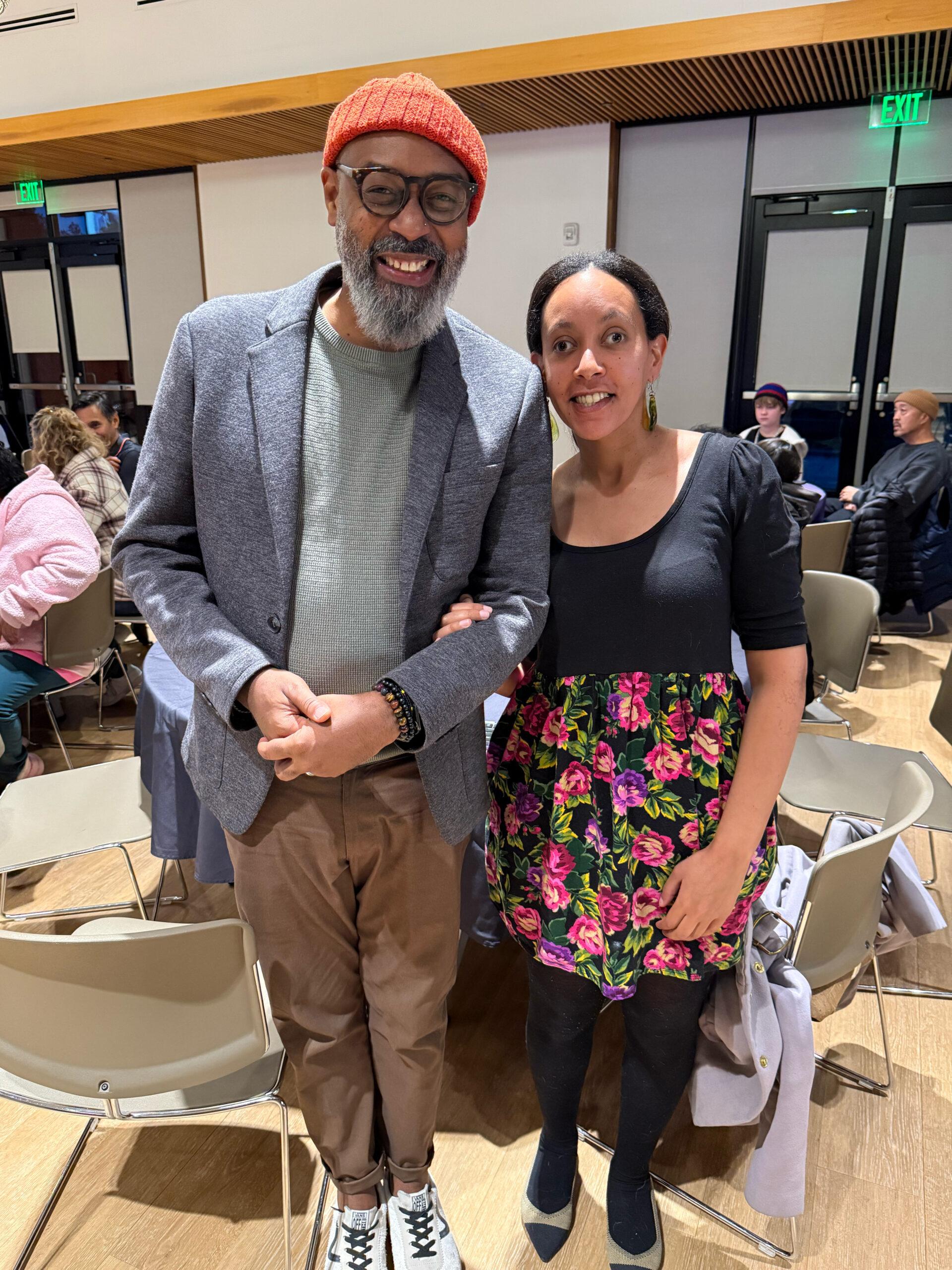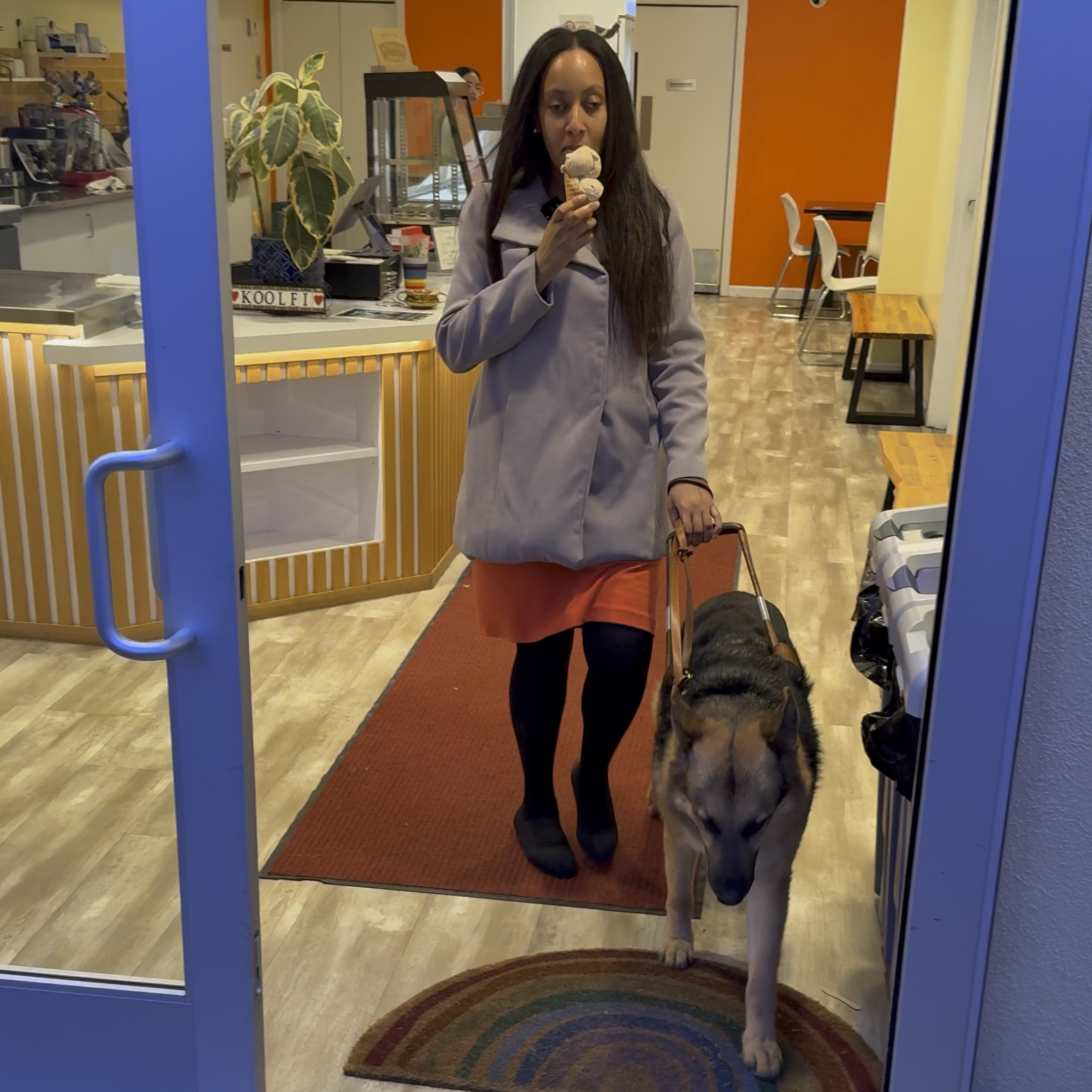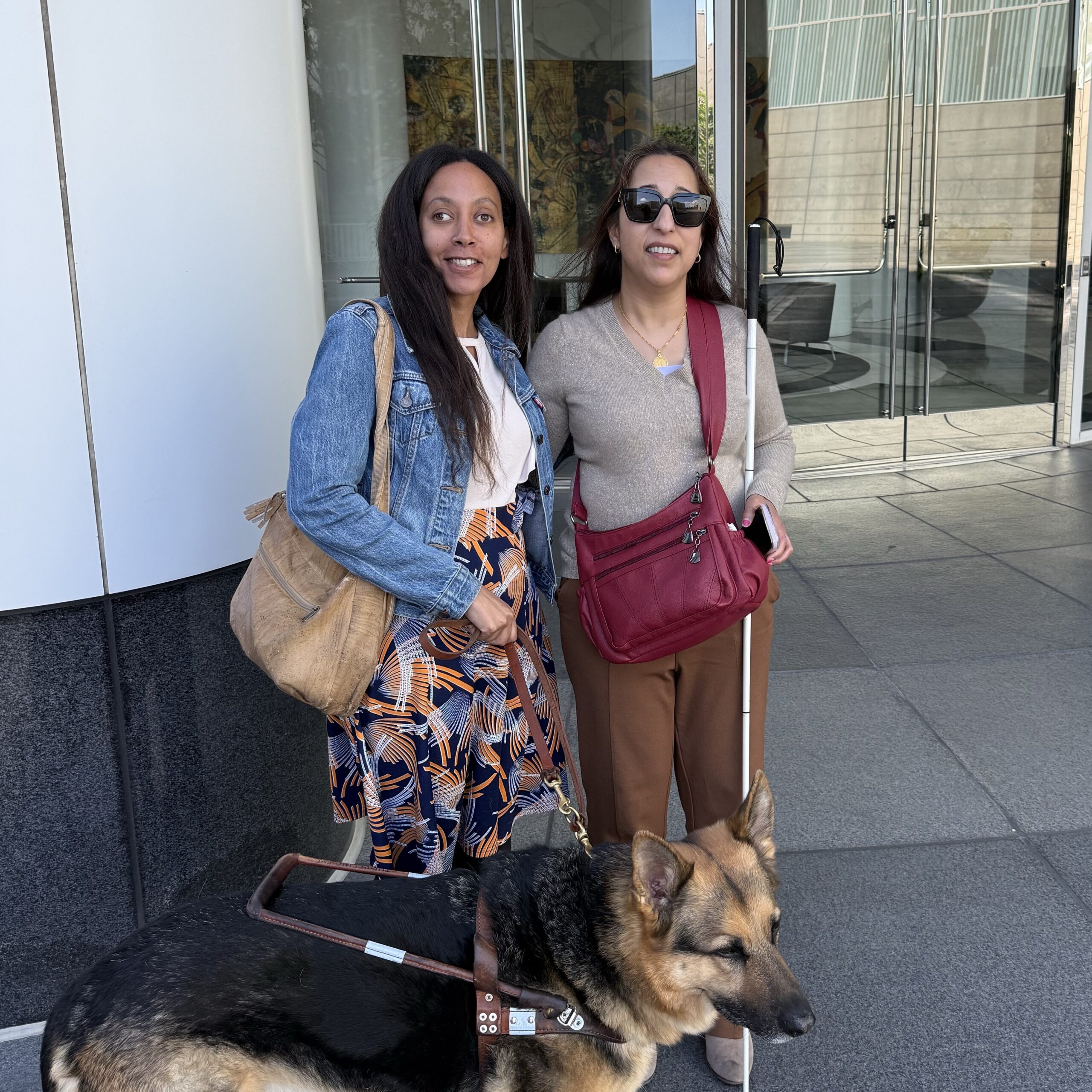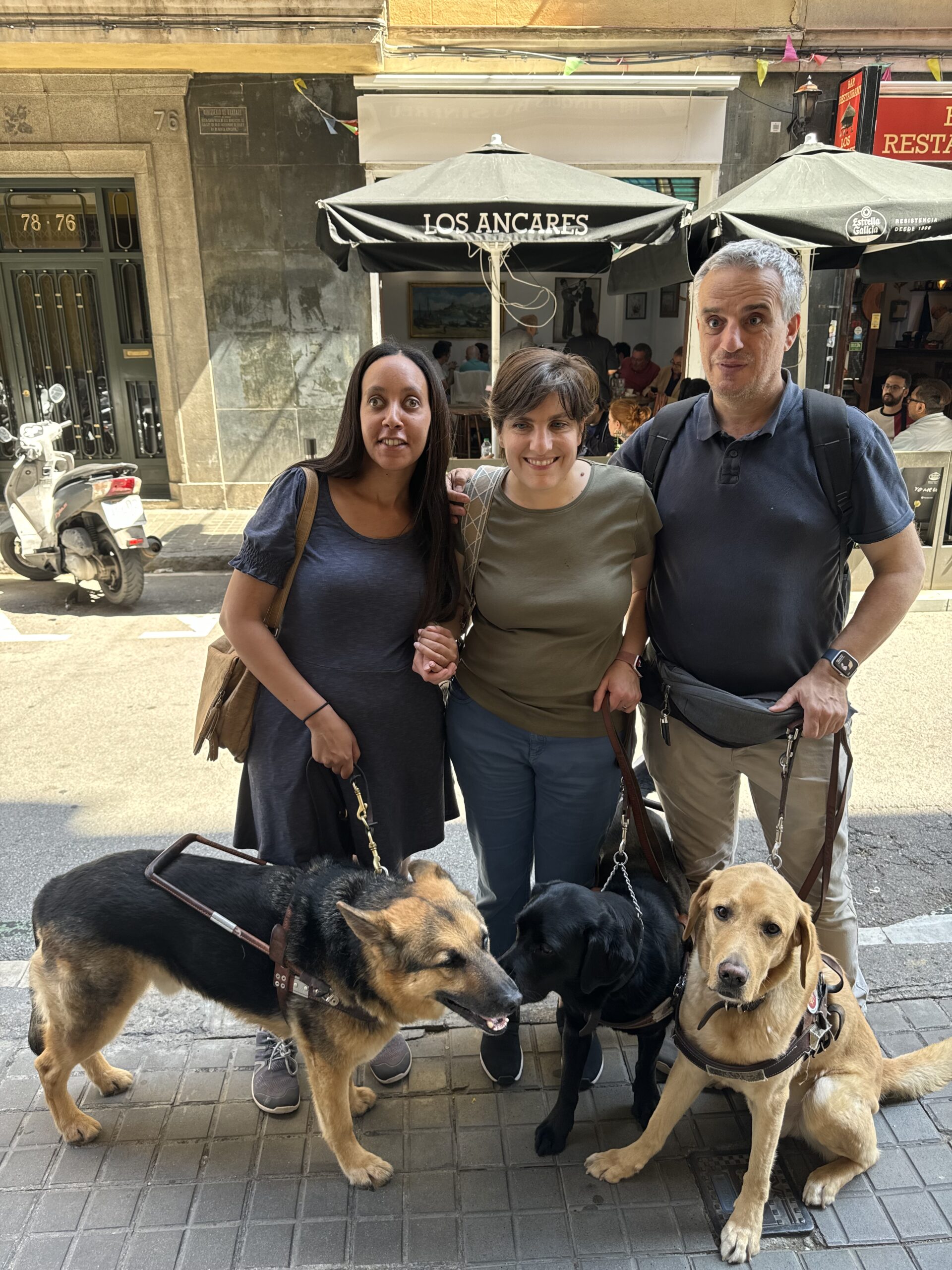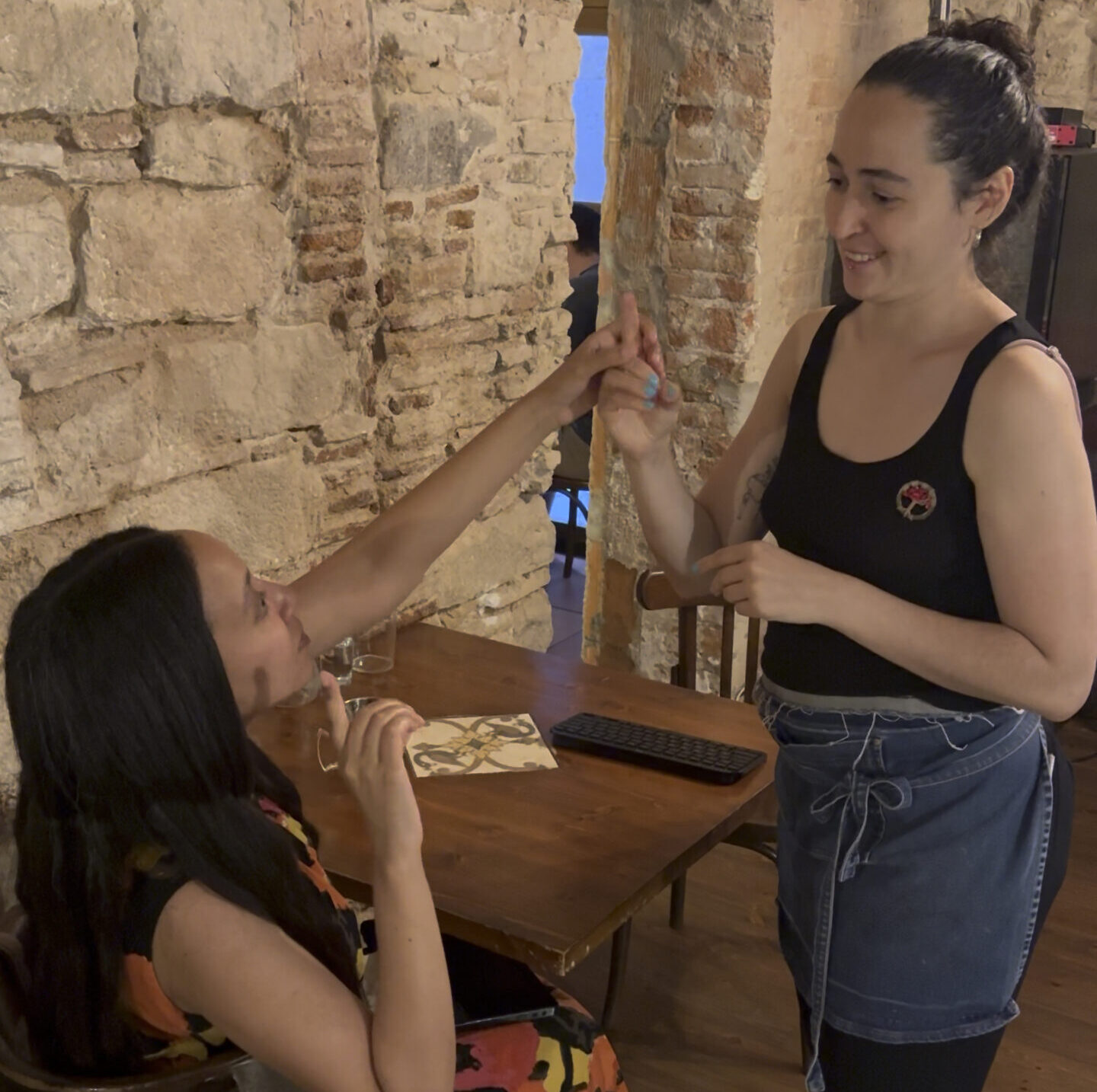Imagine a future where blind people building planes, flying planes, and shaping aviation policy is so common it ceases to be remarkable. Seattle’s Museum of Flight has a selection of planes both blind and sighted people are encouraged to touch. Blind guests can also arrange an extended touch tour, and during my visit a pilot invited us to step over the public access barriers. The hands-on exploration of aviation history included studying the plane modeled on the one flown by Amelia Earhart. We’re excited for more museums around the world to offer accessible programs like touch tours!
Thank you to Gary, our museum guide, for teaching us so much about flying! I’m also grateful for my friend Margaux Joffe who scheduled the tour and joined me on this adventure.
Descriptive Transcript
Seeing Eye dog Mylo wags his tail as he nudges Haben. She’s sitting inside a small, single-seater plane that is positioned slightly lower than the museum floor. She explores the control panels with one hand while petting Mylo who is standing outside the plane.
Haben (voiceover): The Museum of Flight in Seattle offers touch tours.
Photo: Three people smiling together by a railing overlooking a multilevel, expansive museum gallery with a variety of planes on the floor and in the air. On the left is Margaux Joffe, a woman with light skin, short dark hair, glasses, a patterned jacket, dark pants, and white sneakers. She has her arm around Gary, an older man with white hair including his beard, light skin, glasses, navy blue blazer with a lapel pin, light shirt, tie, an ID on a lanyard, dark trousers, and dark shoes. On the right is Haben, a woman with long black hair, dark skin, wearing a denim jacket over a dark dress, and sneakers. Mylo lies on the floor in front of the group, smiling with his tongue out.
Haben (voiceover): Allowing blind individuals to feel a variety of planes, from the engines to climbing into the pilot’s seat.
Photo: Haben studies a radial aircraft engine through blue gloves. Gary also wears blue gloves. Behind them, multiple planes are visible on the floor as well as suspended from the ceiling.
Haben (voiceover): Touch tours help make science more accessible.
Photo: Margaux and Haben smile from inside the pilot seats of a small, bright red RotorWay Scorpion. The helicopter has several strips of black tape on its front. Still, Haben is signing ILY with optimism. Behind them is a large, gray and white model of a space capsule with a yellow entry ramp and open hatch. The capsule and helicopter are in a room with blue carpets, blue walls with painted puffy, white clouds, and panoramic windows showing more planes outside.
